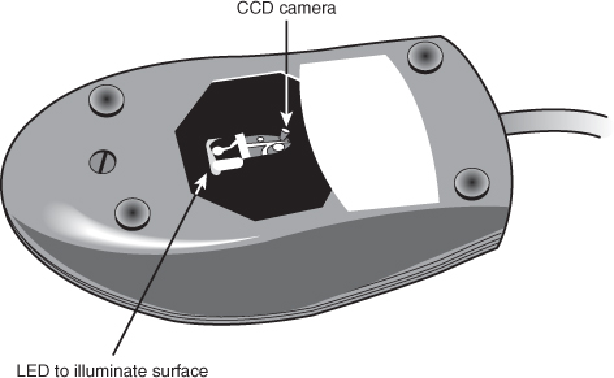Hardware Reference
In-Depth Information
Optical Mice
The other major method of motion detection is optical. Some of the early mice made by
MouseSystems andafewother vendorsusedasensorthat required aspecial grid-marked
pad. Although these mice were accurate, the need to use them with a pad caused them to
fall out of favor.
Microsoft'sIntelliMouse Explorerpioneeredtherebirthofoptical mice.TheIntelliMouse
Explorerandtheothernew-styleopticalmicefromLogitechandothervendorsuseoptical
technology to detect movement, and they have no moving parts of their own (except for
the scroll wheel and buttons on top). Today's optical mice need no pad; they can work on
virtually any surface. This is done by upgrading the optical sensor from the simple type
used in older optical mice to a more advanced CCD (charge coupled device). This essen-
tially is a crude version of a video camera sensor that detects movement by seeing the
surface move under the mouse. An LED or diode laser provides light for the sensor.
TheIntelliMouseExplorerrevolutionizedthemouseindustry;firstLogitech,andthenvir-
tually all other mouse makers, including both retail and OEM suppliers, have moved to
opticalmiceformostoftheirproductlines,offeringavarietyofopticalmiceinmostprice
ranges.
Figure 15.9
shows the essential features of a typical optical mouse.
Figure 15.9
The bottom of the Logitech iFeel optical mouse.
Their versatility and low maintenance (not to mention that neat red or blue glow out the
sides!) make optical mice an attractive choice, and the variety of models available from

